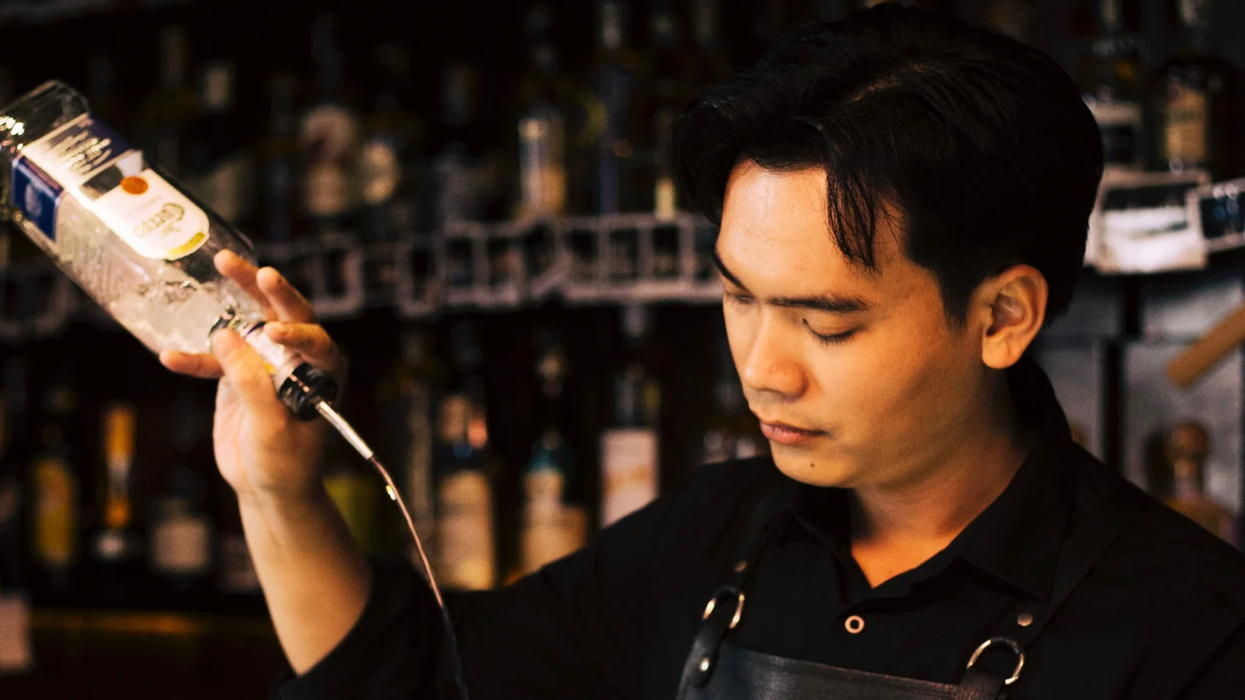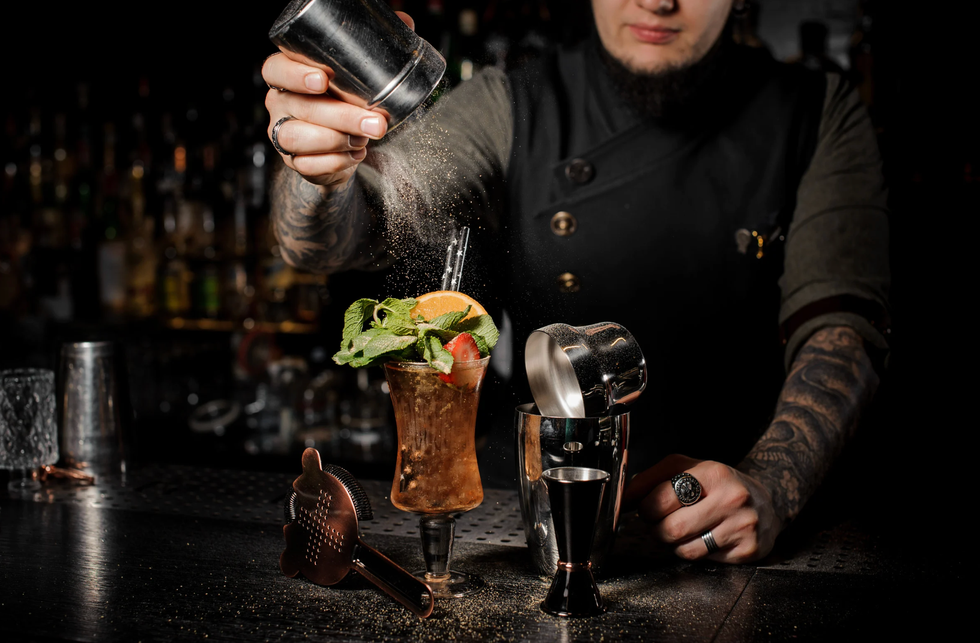Seven years ago, Lars Aikala visited a cucumber greenhouse in a tiny hamlet in Finland. Farmers there told him they spent $12,000 a day on artificial light for their crops—an astounding figure that didn’t take into account expenses such as pesticides, production waste or transportation costs. Aikala, whose background is in wind power and air purification, puzzled over this problem: the greenhouse had almost no exposure to natural sunlight for six months of the year. Artificial light, which has a higher light intensity than natural light, meant a higher overall thermal load that needed to be cooled—an expensive and inefficient process.
Aikala is now CEO of Valoya, a Helsinki-based company he co-founded that designs high efficiency LED lights for plants growing in no sunlight environments. Valoya’s unique horticultural light application enables up to 50 percent savings for growers compared to florescent tubes and traditional fixtures; it also produces a more uniform crop and reduces labor costs (because fewer workers are needed to plow the soil or transport goods, for example), part of a larger effort to bring responsible farming to major markets and bypass the complex (and polluting) infrastructure that so often stands between farm and table. Valoya’s reach is extensive, and the company partners with horticultural organizations around the globe, but Aikala’s vision for the future transcends greenhouse lighting: his team is now focused on developing a method to add nutritional content to plants, as well as on pharmaceutical applications that might someday be used to combat disease and hunger—possible solutions to some of the most pervasive public health issues of our time.
As populations swell and viable farmland dwindles, some predict we may run out of space, both to live and to grow the crops that sustain us—and a shift in the way we grow that food may be our most promising solution. By arranging beds of herbs and leafy greens in a vertically stacked fashion, for example, farmers are able to dramatically increase output while minimizing waste and reliance on foreign imports. Vertical farming also helps growers sidestep the serious limitations of field crops and over-consumption of fresh water preserves.
[quote position="full" is_quote="false"]Picture a steep roller coaster covered in cabbage heads, floating on the ocean.[/quote]
Vertical farmers argue that their approach provides nutritious food that’s grown in a more sustainable way, which supplements produce from field farms and greenhouses. They believe these techniques will revolutionize farming in crowded urban metropolises, during cold winters, and in impoverished parts of the world. And, the growers add, their produce is already in demand because it’s local, available year around, delicious and, to be honest, virtually flawless. With plants grown vertically, there’s no bad weather to worry about, no heavy tractors to purchase or maintain, no fungus to wreck your rutabaga.
To a nation like Singapore—a landmass of only 276 square miles densely populated by 5.31 million residents—this kind of alternative to land farming isn’t just innovative; it’s imperative. Since access to vast swaths of agricultural land is not an option, Singapore relies almost exclusively on foreign imports. But a system of floating farms, dubbed “floating responsive architecture” or FRA, would enable the island city-state to use a resource it possesses in abundance: its coastline.
[quote position="left" is_quote="false"]As populations swell and viable farmland dwindles, some predict we may run out of space, both to live and to grow the crops that sustain us.[/quote]
FRA consists of tall, loopy structures—except they’re vertical instead of horizontal (picture a steep roller coaster covered in cabbage heads, floating on the ocean). Throughout the towers, a network of sensors monitors crops and communicates in real time with city observation stations, so that there’s more efficient management of resources. In theory, crops such as spinach and broccoli may no longer have to be shipped in massive quantities from distant lands. Although the idea is still a prototype, F.R.A.’s designers hope to collaborate with government officials in Singapore and make it the first city to adopt the technology. One company, Skygreens, is already in contract to create a low carbon, hydraulic powered vertical farm in Singapore.
Or consider Aerofarms, a pioneer in aeroponics (the process of growing plants in an air or mist environment). Headquartered in Newark, New Jersey, Aerofarms enables farmers to grow plants without sunlight in a completely indoor environment: the company designed a proprietary misting system that deploys a fraction of the water and fertilizers used in traditional farming methods, a reusable cloth medium made out of recycled plastic for seeding and germinating plants, and LED lights that mimic photosynthesis. This closed loop system optimizes plant growth for taste, texture, and nutrition, using 95% less water than field farming and zero pesticides.
Chief marketing officer Marc Oishima describes Aerofarms’ philosophy as a “whole work approach:” a balance between environment (biology) and engineering (data science) that seeks to transform the way we think about food in our communities. To that end, Aerofarms has tried to serve a wide range of selling partners, from schools to super markets to farm stands.
[quote position="full" is_quote="false"]Dangling daikon and light bulb suns are no longer the stuff of science fiction.[/quote]
Other enterprises are focusing on more small-scale solutions: bringing vertical farming straight to the consumer’s home. Foody Inc., a company located three hours east of Seattle, manufactures hydroponic stacking plant towers that are made for residential and retail use. Company founder Greg Hendrick explains that Foody Towers enable farmers to grow nearly 40 plants (primarily herbs) in a little over two feet of ground space. Synchronized motors slowly rotate the stacked pots, allowing each plant a turn in sunlight, while a magnetic pump drives oxygenated water with liquid nutrients to the topmost pot, obviating the need for soil or fertilizer.
“Our chief concern,” Hendrick explains, “is making food accessible in a way that is healthy, environmentally friendly and financially conservative.”
Indeed, Foody’s vertical gardening towers are working to do just that—in Microsoft’s corporate offices, at a café installation at The Hague, throughout kitchens and school lunchrooms across the Pacific Northwest. The Foody 12 Hydroponic tower retails for $259.00, making it an affordable option for households that don’t have access to a backyard.
With vertical farming, it seems that dangling daikon and light bulb suns are no longer the stuff of science fiction; things are looking up (no pun intended). In China, architecture firm Vincent Callebaut’s inspiring Asian Cairns—a concept developed to “create a fertile urbanization with zero carbon emissions and with positive energy,” as company founder told Dezeen—are the product of a growing interest in skyward urban farming. Despite significant challenges, farmers, engineers and other vertical farming industry leaders are working for greater transparency, better ingredients, increased access to fresh food, and a diminished impact on our finite resources.
From interstitial dwellings to green cities, innovators such as these are improving upon traditional farming techniques to make food accessible and sustainable—vanguards of vertical farming, they are fundamentally changing the way we think about agriculture and the future of food.

















 Screenshots of the man talking to the camera and with his momTikTok |
Screenshots of the man talking to the camera and with his momTikTok |  Screenshots of the bakery Image Source: TikTok |
Screenshots of the bakery Image Source: TikTok | 
 A woman hands out food to a homeless personCanva
A woman hands out food to a homeless personCanva A female artist in her studioCanva
A female artist in her studioCanva A woman smiling in front of her computerCanva
A woman smiling in front of her computerCanva  A woman holds a cup of coffee while looking outside her windowCanva
A woman holds a cup of coffee while looking outside her windowCanva  A woman flexes her bicepCanva
A woman flexes her bicepCanva  A woman cooking in her kitchenCanva
A woman cooking in her kitchenCanva  Two women console each otherCanva
Two women console each otherCanva  Two women talking to each otherCanva
Two women talking to each otherCanva  Two people having a lively conversationCanva
Two people having a lively conversationCanva  Two women embrace in a hugCanva
Two women embrace in a hugCanva 
 A reddit commentReddit |
A reddit commentReddit |  A Reddit commentReddit |
A Reddit commentReddit |  A Reddit commentReddit |
A Reddit commentReddit |  Stressed-out employee stares at their computerCanva
Stressed-out employee stares at their computerCanva
 Who knows what adventures the bottle had before being discovered.
Who knows what adventures the bottle had before being discovered. 
 Gif of young girl looking at someone suspiciously via
Gif of young girl looking at someone suspiciously via 

 A bartender makes a drinkCanva
A bartender makes a drinkCanva